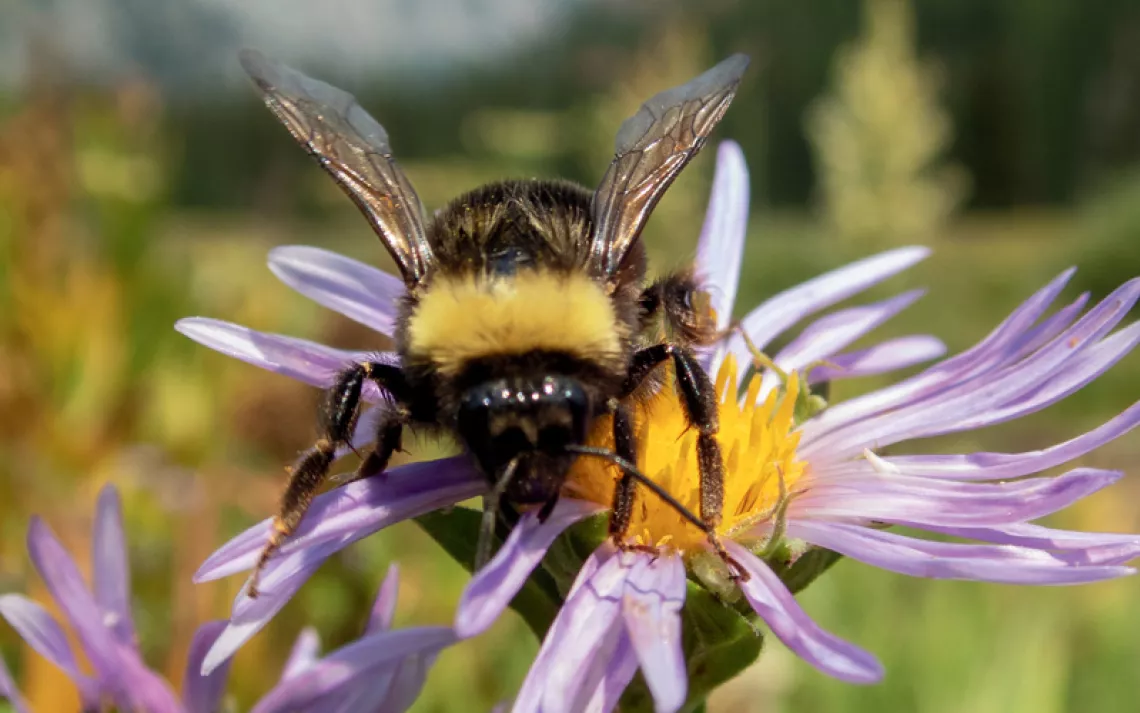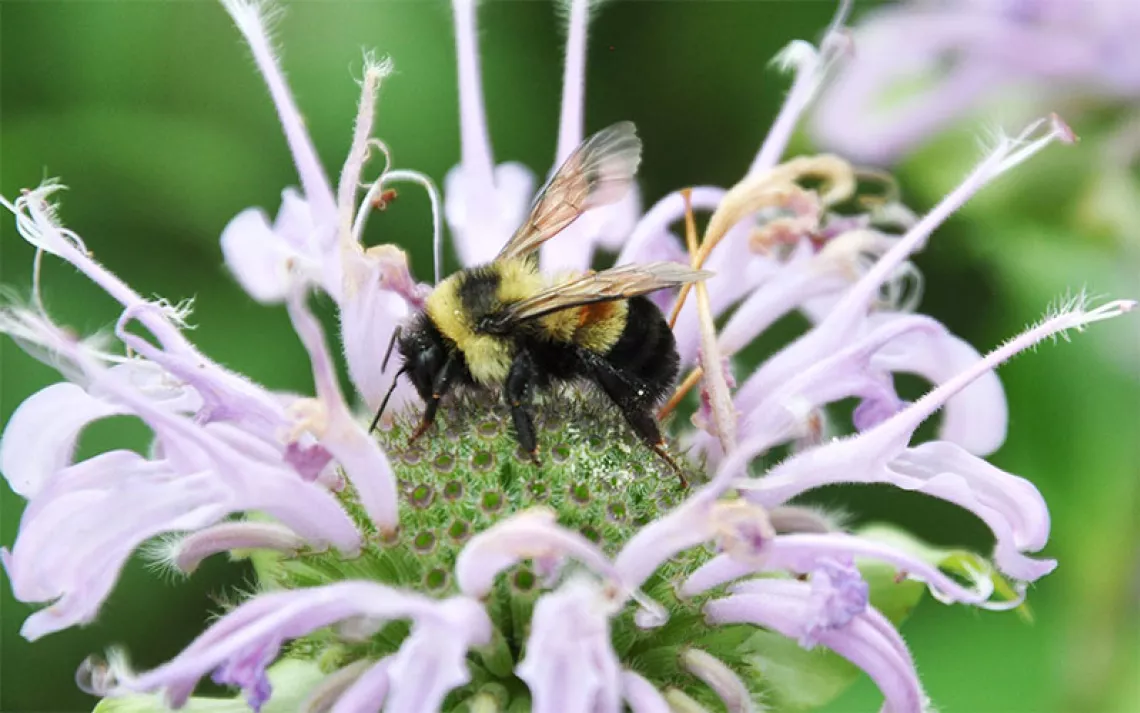Hey Mr. Green! Do Alien Bees Threaten Native Species?
Busy Mr. Green gets to the bottom of the question

Illustration by Little Friends of Printmaking
Q: We were excited when our daughter's school got a beehive to help counter colony collapse disorder. I was surprised to learn, however, that honeybees are not native to North America. So is the die-off of non-native honeybees a legitimate environmental concern, or do they crowd out our native bees?
—Ryan in Littleton, Colorado
A: Honeybees are non-native, but not all non-native species are dire threats to native plants and animals. With few exceptions, native bees have been displaced by agriculture and development, not assaults from alien honeybees. (I used to keep honeybees and never observed one attack a native bee—of which there are 4,000 species in the United States.)
Some crops—including almonds, apples, blueberries, cherries, and broccoli—are almost totally dependent on honeybees for pollination, while others enjoy higher yields thanks to the legendary busyness of bees in general. Bees contribute about $15 billion to the ag economy, mostly because of their pollinating power; honey accounts for only a small fraction of the total. The fact that 44 percent of honeybee colonies were lost between April 2015 and April 2016 is a legitimate environmental concern.
There is evidence that neonicotinoid pesticides are responsible for killing both honeybees and wild bees. Partly to get away from these pesticides, some commercial beekeepers are parking their colonies in national forests. One recent study shows that this practice deprives native bees of the pollen they need to survive. So in limited circumstances, honeybees can crowd out natives, but environmental factors—from building roads to plowing land—are much greater threats to both kinds of bees.
 The Magazine of The Sierra Club
The Magazine of The Sierra Club



